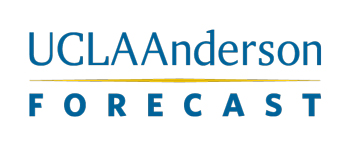Could dysfunction in Washington spill over to the U.S. economy?
The forecast examines declining employment in the retail industry, thanks in part to an increase in online shopping and more stores using automated checkout.September 27, 2017 - UCLA Anderson Forecast’s report for the third quarter of 2017 anticipates modest growth in real GDP with gains in employment. On a national level, a number of pro-growth economic policies involving proposed tax cuts,
 investment in infrastructure and regulatory relief were expected to be initiated this year by the new administration in Washington, D.C., but few have transpired.
investment in infrastructure and regulatory relief were expected to be initiated this year by the new administration in Washington, D.C., but few have transpired.Although there has been some progress on the regulatory front, challenges remain on a host of issues, including immigration, health care and trade policies.
The national forecast
In his outlook for the national economy, UCLA Anderson Forecast senior economist David Shulman notes that the economy has grown, despite the chaos in Washington, and is expected to continue to grow at more than 2 percent, while operating at full employment. He writes that growth will continue with real GDP increasing by 2.1 percent in 2017, followed by increases of 2.8 percent in 2018 and 2.1 percent in 2019.
The impact of hurricanes Harvey and Irma will lower growth slightly from previous expectations for the current quarter and possibly the fourth quarter, with an increase now expected early next year. As building efforts intensify, the optimism for 2018 is based on expectations that Congress will ultimately enact a tax cut and a formal infrastructure package later this year, which could increase the federal deficit to about $700 billion in 2019.
“In this environment, the unemployment rate will remain at or below the current 4.4 percent for the forecast horizon,” Shulman writes. “On the spending side, we anticipate a $250 billion infrastructure program and a material increase in defense appropriations coming from increased global tensions, especially with respect to North Korea, which will make missile defense spending a top priority. Aside from defense, the sources of growth over the next two years will come from consumption, housing (in 2018) and equipment spending. Should we be wrong on the tax cuts, growth would be slower.”
Inflation will increase modestly, running slightly above the 2 percent range. The combination of full employment and somewhat higher inflation will prompt the Fed to continue its modest tightening path by raising interest rates roughly 25 basis points per quarter into 2019.
The California report
The July jobs numbers brought good news to California, noted UCLA Anderson Forecast director and senior economist Jerry Nickelsburg. The state’s unemployment rate ticked up to a still low 5.1 percent from 4.8 percent in July.
Nickelsburg writes that a change in the tax law and an increase in home construction that has boosted growth in that sector should spell slightly faster growth than for the U.S. overall. “The unemployment rate is expected to have its normal differential to the U.S. rate at 4.5 percent by the end of the forecast period (2019), the same as in June’s forecast.”
The California forecast takes an expansive look at housing affordability, which is a prime concern in Sacramento and in city halls throughout the state.
“The current legislative initiatives will moderate the increase in the price of housing, but will not do much to alleviate the high cost of living in California in the near term,” he writes.
The forecast for total employment growth in California is 1.1 percent for 2017, 0.9 percent in 2018 and 0.9 percent in 2019. Payrolls will grow at about the same rate over the forecast horizon, and real personal income is forecast to grow 2.0 percent in 2017, 3.1 percent in 2018 and 3.1 percent in 2019. Home building will accelerate to about 123,000 units per year through the forecast horizon.
Changes in the retail industry
In the report, UCLA Anderson Forecast economist William Yu examines the decline in employment in the retail industry across the country. Despite continued economic expansion, employment in this sector declined by 29,000 in the past year.
With an increase in online shopping and more stores using automated checkout in place of cashiers, Yu questions whether retail will “become the next shrinking sector in terms of jobs over the next few decades.”
All of the reports will be presented at the UCLA Anderson Forecast’s quarterly conference on Wednesday, September 27.
The conference will feature a panel discussion on the future of the retail market. Panelists will include John Tipton, partner, Allen Matkins; Gary Schoenfeld, former CEO, Pacific Sunwear and Vans Inc.; Randolph E. Bucklin, Peter W. Mullin Chair in Management and professor of marketing, UCLA Anderson School of Management; Daniel Busch, managing director, Green Street Advisors Retail Specialist; and Art Coppola, chairman and CEO, Macerich.
About UCLA Anderson Forecast
UCLA Anderson Forecast is one of the most widely watched and often-cited economic outlooks for California and the nation, and was unique in predicting both the seriousness of the early-1990s downturn in California and the strength of the state’s rebound since 1993. More recently, the Forecast was credited as the first major U.S. economic forecasting group to declare the recession of 2001.
Source: UCLA








